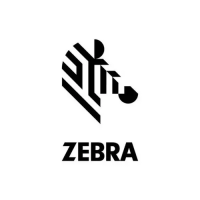Data Capture
50
Operational Modes
The optional imager supports two modes of operation. Activate each mode pressing the Scan button.
• Decode Mode: In this mode, the imager attempts to locate and decode bar codes within its field of view.
The imager remains in this mode as long as the user holds the scan button, or until it decodes a bar code.
• Pick List Mode: This mode allows the user to selectively decode a bar code when more than one bar code
is in the imager’s field of view. To accomplish this, move the aiming crosshair center dot over the required
bar code to decode only that bar code. This feature is ideal for pick lists containing multiple bar codes and
manufacturing or transport labels containing more than one bar code (either 1D or 2D).
Scanning Considerations
Typically, scanning is a simple matter of aim, scan/decode and a few quick trial efforts master it. However, two
important considerations can be used to optimize any scanning performance:
• Range
Any scanning device decodes well over a particular working range - minimum and maximum distances from
the bar code. This range varies according to bar code density and scanning device optics.
Scanning within range brings quick and constant decodes; scanning too close or too far away prevents
decodes. Move the scanner closer and further away to find the right working range for the bar codes being
scanned. However, the situation is complicated by the availability of various integrated scanning modules. The
best way to specify the appropriate working range per bar code density is through a chart called a decode zone
for each scan module. A decode zone simply plots working range as a function of minimum element widths of
bar code symbols. Refer to the WT6000 Integrator Guide for decode zones for the optional data capture
options.
• Angle
Scanning angle is important for promoting quick decodes. When laser beams reflect directly back into the
scanner from the bar code, this specular reflection can “blind” the scanner.
To avoid this, scan the bar code so that the beam does not bounce directly back. But don’t scan at too sharp
an angle; the scanner needs to collect scattered reflections from the scan to make a successful decode.
Practice quickly shows what tolerances to work within.
\
Bar Code Capture with RS4000
To read a bar code, a scan-enabled application is required. The WT6000 contains the DataWedge application that
allows the user to enable the scanner to decode bar code data and display the bar code content. See DataWedge
on page 84 for information on enabling DataWedge.
1. Connect the RS4000 to the WT6000. See RS4000 Scanner on page 124 for more information.
2. Ensure that a scan enabled application is loaded or DataWedge is enabled (see DataWedge on page 84 for
more information).
3. Press the trigger.
NOTE: To enable Pick List Mode use DataWedge. Pick List can also be set in an application using a API
command.
NOTE: Contact the Zebra Global Support Center if chronic scanning difficulties develop. Decoding of properly
printed bar codes should be quick and effortless.

